We Can See Total Solar Eclipses Because of Which of the Following?
Solar eclipses: When is the next one?
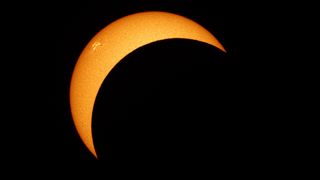
A solar eclipse occurs when the moon gets betwixt Earth and the lord's day, and the moon casts a shadow over Earth. A solar eclipse tin only take place at the phase of new moon, when the moon passes directly between the sun and Earth and its shadows fall upon Earth'due south surface. But whether the alignment produces a total solar eclipse, a partial solar eclipse or an annular solar eclipse depends on several factors, all explained below.
The fact that an eclipse can occur at all is a fluke of angelic mechanics and time. Since the moon formed about 4.5 billion years agone, it has been gradually moving away from Globe (past nigh 1.6 inches, or four centimeters per year). Right now the moon is at the perfect distance to appear in our heaven exactly the aforementioned size equally the sun, and therefore block information technology out. But this is non always truthful.
When is the next solar eclipse?
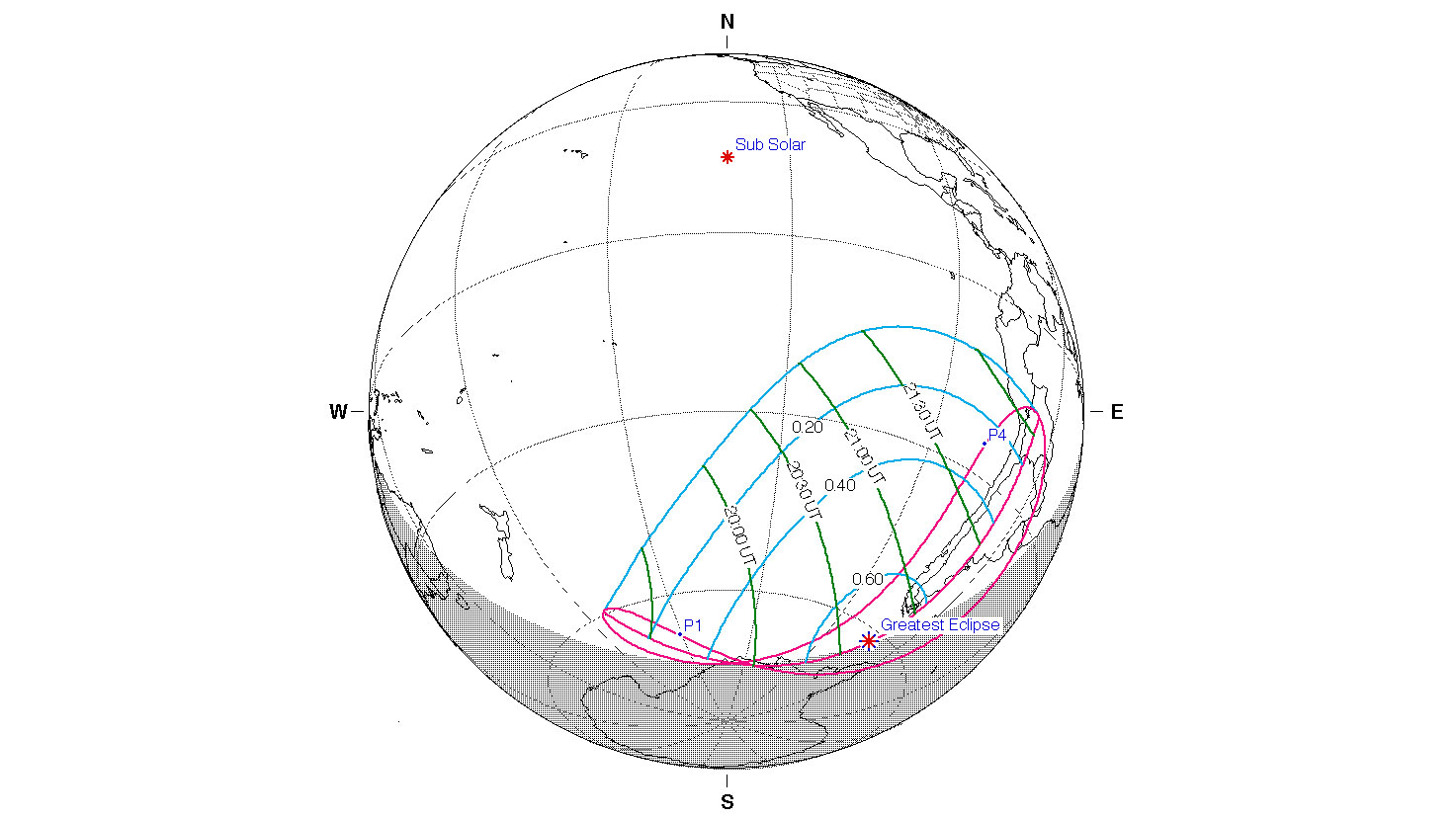
The next solar eclipse will exist a partial solar eclipse on April 30, 2022. It will exist the first of 2 fractional solar eclipses in 2022; the second will occur on October. 25. We won't see some other full solar eclipse until 2023.
Related: Solar eclipse guide 2022: When, where & how to encounter them
The April 30 eclipse will just be visible from parts of Antarctica and the southern tip of South America, as well as parts of the Pacific and Atlantic oceans.
Types of solar eclipses
There are four types of solar eclipses: total, annular, partial and hybrid. Here'due south what causes each type:
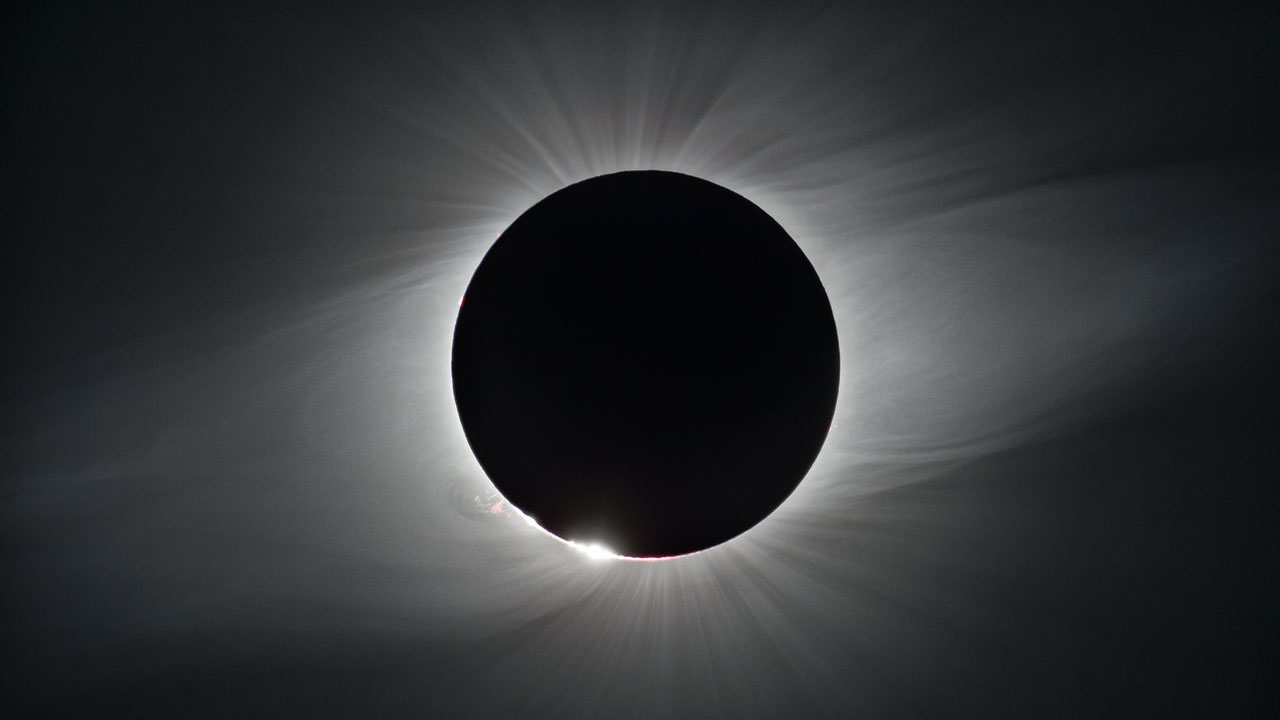
Total solar eclipses
Total solar eclipses are a happy accident of nature. The sun's 864,000-mile bore is fully 400 times greater than that of our puny moon, which measures merely most 2,160 miles. Just the moon besides happens to be about 400 times closer to World than the dominicus (the ratio varies as both orbits are elliptical), and as a event, when the orbital planes intersect and the distances marshal favorably, the new moon tin appear to completely blot out the disk of the dominicus. On the average a total eclipse occurs somewhere on Earth nigh every 18 months.
At that place are actually ii types of shadows: the umbra is that part of the shadow where all sunlight is blocked out. The umbra takes the shape of a nighttime, slender cone. Information technology is surrounded by the penumbra, a lighter, funnel-shaped shadow from which sunlight is partially obscured.
During a full solar eclipse, the moon casts its umbra upon Earth's surface; that shadow can sweep a third of the way effectually the planet in but a few hours. Those who are fortunate enough to be positioned in the direct path of the umbra will see the sun'due south disk diminish into a crescent every bit the moon's dark shadow rushes toward them across the landscape.
During the brief menstruum of totality, when the sun is completely covered, the beautiful corona — the tenuous outer atmosphere of the sun — is revealed. Totality may final as long every bit 7 minutes 31 seconds, though well-nigh total eclipses are usually much shorter.
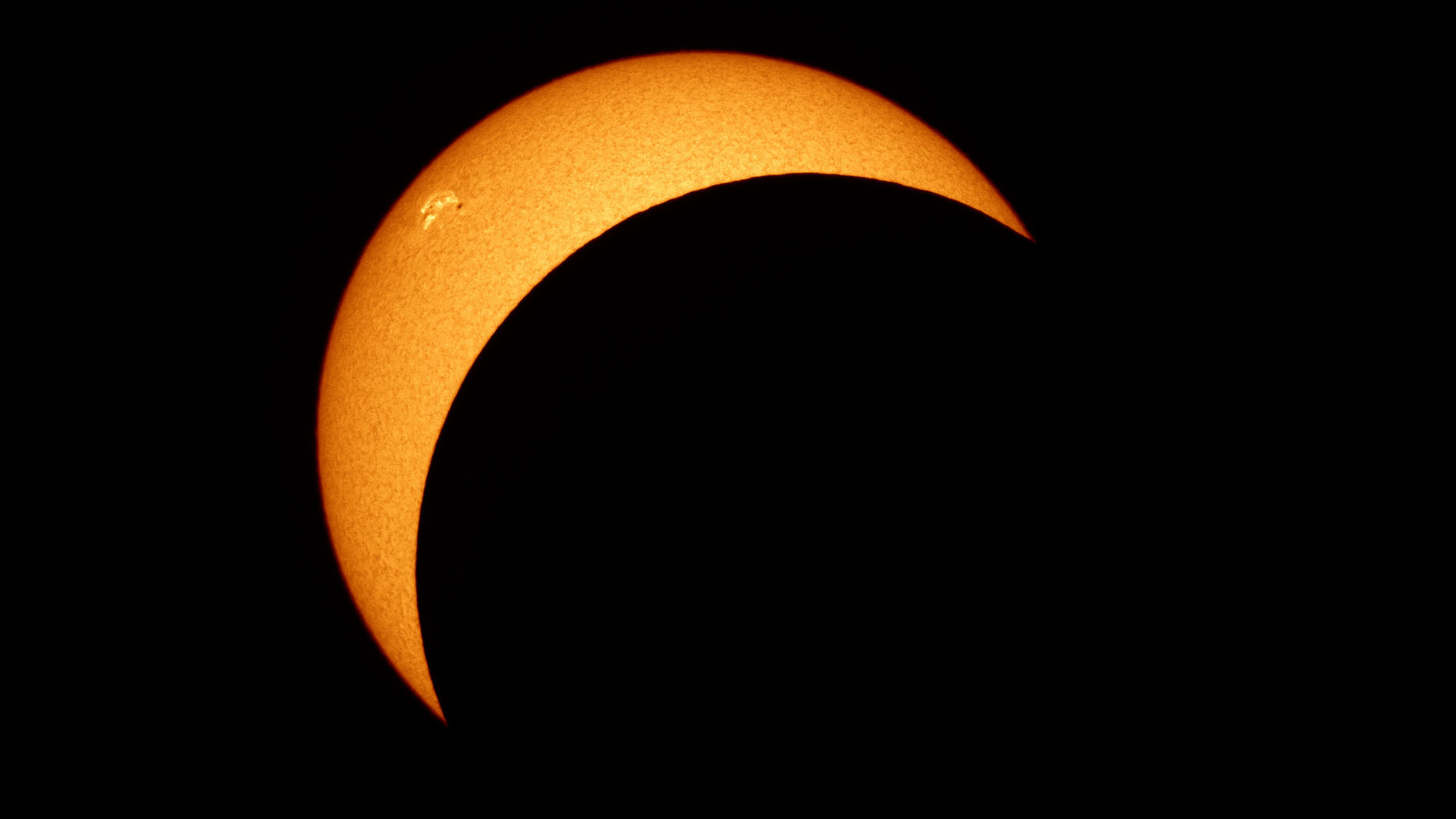
Partial solar eclipses
A partial solar eclipse occurs when only the penumbra (the partial shadow) passes over y'all. In these cases, a function of the sun always remains in view during the eclipse. How much of the dominicus remains in view depends on the specific circumstances.
Usually the penumbra gives just a glancing accident to our planet over the polar regions; in such cases, places far abroad from the poles simply still within the zone of the penumbra might not see much more a modest scallop of the sun hidden past the moon. In a unlike scenario, those who are positioned within a couple of thousand miles of the path of a total eclipse will run across a partial eclipse.
The closer you are to the path of totality, the greater the solar obscuration. If, for instance, you lot are positioned just outside of the path of the total eclipse, yous will see the sun wane to a narrow crescent, so thicken up again equally the shadow passes by.
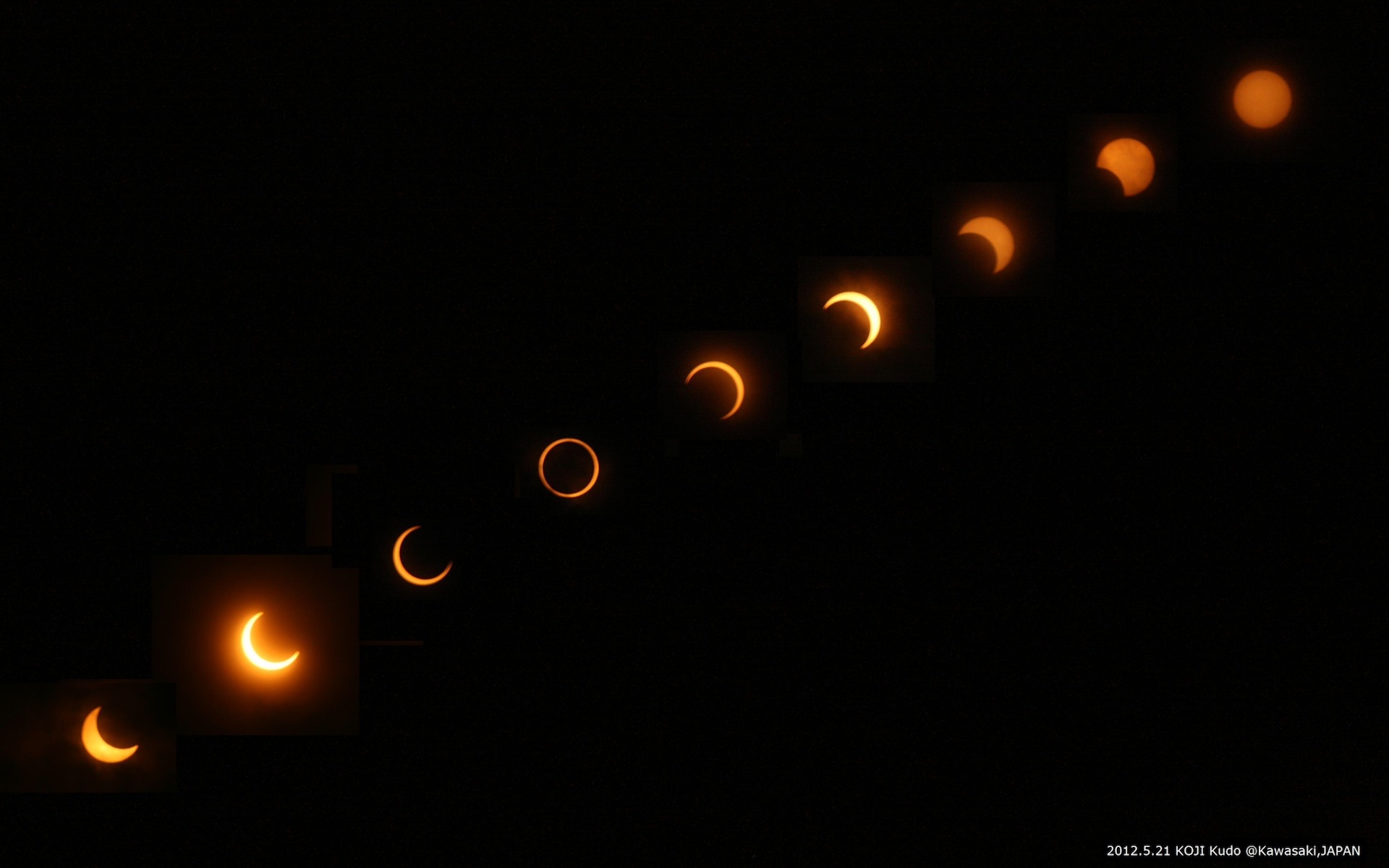
Annular solar eclipses
An annular eclipse, though a rare and astonishing sight, is far dissimilar from a total ane. The heaven will darken ... somewhat; a sort of weird "counterfeit twilight" since so much of the sun withal shows. The annular eclipse is a subspecies of a partial eclipse, not total. The maximum duration for an annular eclipse is 12 minutes 30 seconds.
Notwithstanding, an annular solar eclipse is similar to a full eclipse in that the moon appears to pass centrally across the dominicus. The difference is, the moon is too modest to cover the disk of the sun completely. Because the moon circles Earth in an elliptical orbit, its distance from Earth tin vary from 221,457 miles to 252,712 miles. But the dark shadow cone of the moon'southward umbra can extend out for no longer than 235,700 miles; that's less than the moon's boilerplate distance from Earth.
So if the moon is at some greater distance, the tip of the umbra does not reach World. During such an eclipse, the antumbra, a theoretical continuation of the umbra, reaches the ground, and anyone situated inside information technology can look upward by either side of the umbra and see an annulus, or "band of fire" effectually the moon. A good analogy is putting a penny atop a nickel, the penny being the moon, the nickel being the sun.
Hybrid solar eclipses
These are too chosen annular-total ("A-T") eclipses. This special type of eclipse occurs when the moon's distance is near its limit for the umbra to reach Earth. In most cases, an A-T eclipse starts as an annular eclipse considering the tip of the umbra falls just short of making contact with Earth; then information technology becomes total, because the roundness of the planet reaches upward and intercepts the shadow tip nigh the heart of the path, then finally it returns to annular toward the cease of the path.
Because the moon appears to pass directly in front of the sun, total, annular and hybrid eclipses are also called "key" eclipses to distinguish them from eclipses that are simply fractional.
Of all solar eclipses, about 28% are total; 35% are partial; 32% annular; and simply 5% are hybrids.
Predicting solar eclipses
Eclipses practice not happen at every new moon, of course. This is considering the moon's orbit is tilted just over 5 degrees relative to Globe'due south orbit effectually the sun. For this reason, the moon's shadow unremarkably passes either higher up or beneath Earth, and then a solar eclipse doesn't occur.
Just as a rule, at least twice each year (and sometimes every bit many every bit five times in a year), a new moon will marshal itself in but such a way to eclipse the lord's day. That alignment betoken is called a node. Depending on how closely the new moon approaches a node will determine whether a particular eclipse is cardinal or partial. And of course, the moon'southward distance from the Earth — and to a lesser degree, Earth's altitude from the sun — will ultimately determine whether a central eclipse is full, annular or a hybrid.
And these alignments don't happen haphazardly, for afterwards a specific interval of time, an eclipse will repeat itself or return. This interval is known as the Saros wheel and was known as far back as the days of the early Chaldean astronomers some 28 centuries ago. The word Saros means "repetition" and is equal to 18 years, eleven⅓ days (or a twenty-four hours less or more depending on the number of leap years that take intervened). Later on this interval, the relative positions of the lord's day and moon relative to a node are near the same as before. That third of a day in the interval causes the path of each eclipse of a series to be displaced in longitude a third of the way around Globe to the due west with respect to its predecessor.
For example, on March 29, 2006, a total eclipse swept across parts of western and northern Africa and and then across south asia. I Saros after, on April 8, 2024, this eclipse volition recur, except instead of Africa and Asia, it volition track across northern Mexico, the central and eastern United States and the Maritime provinces of Canada.
Observing a solar eclipse safely
Every bit a solar eclipse approaches, the mainstream media frequently will provide a multifariousness of warnings and advisories against looking at the lord's day with blank eyes, equally blindness could ensue. This has given most people the thought that eclipses are unsafe.
Not so!
It's the sun that is dangerous — all the time! The lord's day constantly emits invisible infrared rays that can damage your eyes. Unremarkably, we have no reason to gaze at the lord's day. An eclipse gives us a reason, just we shouldn't.
There are condom ways, however . . .
By far, the safest style to view a solar eclipse is to construct a "pinhole camera." A pinhole or small opening is used to form an image of the sun on a screen placed almost three feet (or about i meter) behind the opening. Binoculars or a good telescope mounted on a tripod tin can too exist used to project a magnified paradigm of the sun onto a white bill of fare. The farther away the card, the larger you can focus the image. Look for sunspots. Notice that the lord's day appears somewhat darker around its limb or edge. This method of solar viewing is safe so long as y'all remember non to look through the binoculars or telescope when they are pointed toward the dominicus; put another way, never expect direct at the sunday when any office of its blindingly brilliant surface is visible.
A variation on the pinhole theme is the "pinhole mirror." Cover a pocket-mirror with a piece of paper that has a ¼-inch hole punched in it. Open a sun-facing window and identify the covered mirror on the sunlit sill so information technology reflects a deejay of light onto the far wall within. The disk of light is an image of the sun's confront. The farther away from the wall is the better; the image will exist only 1 inch across for every 9 feet (or 3 centimeters for every 3 meters) from the mirror. Modeling dirt works well to hold the mirror in place. Experiment with unlike-sized holes in the paper. Again, a large hole makes the paradigm bright, but fuzzy, and a small one makes it dim but sharp. Darken the room as much as possible. Be sure to try this out beforehand to make sure the mirror's optical quality is good enough to project a make clean, round image. Of class, don't let anyone look at the sun in the mirror.
If you're around leafy trees, look at the shadow cast by them during the partial phases. What do you run into? Is information technology worth a photograph? You will see scores of partially eclipsed suns projected through pinhole gaps between the leaves. This is caused past diffraction, a property of light. Co-ordinate to Vince Huegele, an optical physicist at the NASA Marshall Space Flying Center, the light rays do not shoot directly past the rim of the gaps, or a pinhole, simply bend effectually the border. This wave consequence creates a pattern of rings that resembles a bull's middle. If you want to go all set up for it, we have guides to the best cameras for astrophotography, and the best lenses for astro, so you can exist well prepared when the time comes.
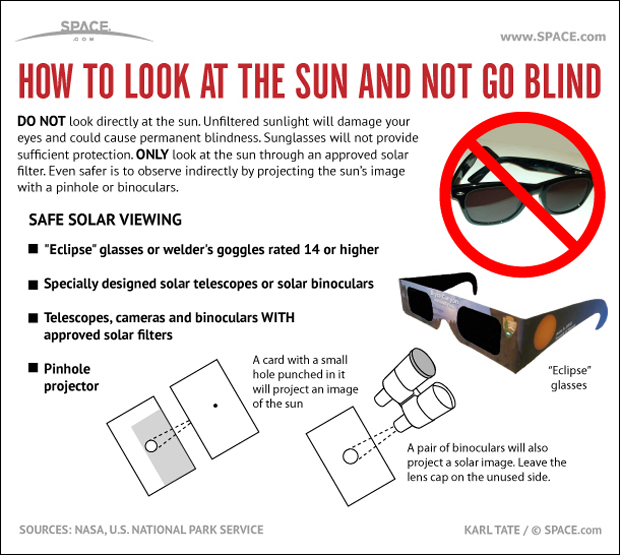
Acceptable filters for unaided visual solar observations include aluminized Mylar. Some astronomy dealers carry Mylar filter fabric specially designed for solar observing. Also acceptable is shade 14 arc-welder'south drinking glass, available for simply a few dollars at welding supply shops. Of course, information technology is e'er a expert idea to test your filters and/or observing techniques before eclipse day.
Unacceptable filters include sunglasses, quondam color film negatives, black-and-white motion-picture show that contains no silvery, photographic neutral-density filters and polarizing filters. Although these materials have very low visible-light transmittance levels, they transmit an unacceptably loftier level of near-infrared radiation that can cause a thermal retinal burn. The fact that the sun appears dim, or that you experience no discomfort when looking at the dominicus through these types of filters, is no guarantee that your eyes are safe.
At that place is one fourth dimension when you lot can safely expect directly at the lord's day: during a full eclipse, when the sun'southward disk is entirely covered. During those few precious seconds or minutes, the magnificent corona shines forth in all its glory surrounding the darkened sun; a marvelous fringe of pearly white lite. It differs in size, in tints and patterns from eclipse to eclipse. It is always faint and delicate, with a sheen like a pale aurora. It has a variable appearance. Sometimes it has a soft continuous expect; at other times, long rays of it shoot out in three or four directions. It may stand out from the disk in filmy petals and streamers. But when the sun begins to again emerge into view, the corona quickly disappears and yous'll demand to protect your optics in one case over again.
Eclipses in ancient history
As best as we can decide, the earliest record of a solar eclipse occurred over four millennia ago. In People's republic of china, information technology was believed that the gradual blotting out of the dominicus was caused by a dragon who was attempting to devour the sunday, and it was the duty of the court astronomers to shoot arrows, beat drums and heighten any cacophony they could to affright the dragon away.
In the aboriginal Chinese classic Shujing (or Book of Documents) is the account of Hsi and Ho, ii courtroom astronomers who were defenseless completely unaware by a solar eclipse, having gotten drunk only earlier the event began. In the backwash, Zhong Kang, the 4th emperor of the Xia dynasty ordered that Hsi and Ho be punished past having their heads chopped off. The eclipse in question was that of Oct. 22 in the twelvemonth 2134 B.C.
In the Bible, in the book of Amos 8:9, are the words, "I will cause the lord's day to go down at apex, and I will darken the Earth in the clear day." Biblical scholars believe this is a reference to a historic eclipse observed at Nineveh in ancient Assyria on June 15, 763 B.C. An Assyrian tablet also attests to the event.
A solar eclipse even stopped a war.
According to the historian Herodotus, there was a five-year war that raged between the Lydians and the Medes. Equally the state of war was almost to motility into its 6th year, a Greek sage, Thales of Miletus foretold to the Ionians that the time was soon approaching when day would turn to night. On May 17, 603 B.C. the sun faded abroad just as Thales had alluded that it would. Then believing that it was a sign from above, the combatants called a truce, which was cemented by a double marriage, for, every bit Herodotus wrote: "Without some stiff bond, there is trivial of security to be found in men'south covenants."
And giving new pregnant to the term "scared to death," is the timid emperor Louis of Bavaria, the son of Charlemagne, who witnessed an unusually long total eclipse of the sun on May 5, A.D. 840, which lasted for over v minutes. Simply no sooner had the sunday begun to sally dorsum into view, Louis was so overwhelmed by what he had simply seen that he died of fearfulness.
Modern report of eclipses
Astronomers have learned much by studying eclipses and by the 18th century, observations of solar eclipses were recognized as providing veritable treasure troves of astronomical information, though sometimes getting that information wasn't easy.
Samuel Williams, a professor at Harvard, led an expedition to Penobscot Bay, Maine, to find the total solar eclipse of Oct. 27, 1780. As it turned out, this eclipse took place during the Revolutionary War, and Penobscot Bay lay behind enemy lines. Fortunately, the British granted the trek rubber passage, citing the involvement of scientific discipline above political differences.
And nonetheless in the cease, it was all for zippo.
Williams apparently made a crucial mistake in his computations and inadvertently positioned his men at Islesboro — just exterior the path of totality — likely finding this out with a heavy eye when the narrowing crescent of sunlight slid completely around the nighttime edge of the moon and and then started to thicken!
During a total solar eclipse, a few cherry-red-cherry spots may seem to hover effectually the jet-black disk of the moon. Those are solar prominences, tongues of incandescent hydrogen gas rising to a higher place the surface of the sunday. During the full eclipse of Aug. 18, 1868, the French astronomer Pierre Janssen trained his spectroscope on the prominences and discovered a new chemic element. Two English astronomers, J. Norman Lockyer and Edward Frankland, afterwards named it "helium," from the Greek helios (the sun). The gas was not identified on Earth until 1895.
And because sunlight is blocked during a total eclipse, some of the brighter stars and planets can be observed in the darkened sky. Under such conditions astronomers were able to test part of Einstein's now-celebrated general theory of relativity. That theory predicted that light from stars beyond the sun would bend from a straight path in a certain way equally it passed the lord's day. The positions of stars photographed near the lord's day'due south edge during a total eclipse on May 29, 1919, were compared with photographs of the same region of the sky taken at night; the results strongly supported Einstein's theory.
Our modern engineering now allows astronomers to make near of the observations that once had to wait an eclipse. But a total eclipse of the sun volition ever remain amongst the about impressive of natural glasses and is a sight that will always be remembered. Be certain to put it on your bucket list; yous will not be disappointed.
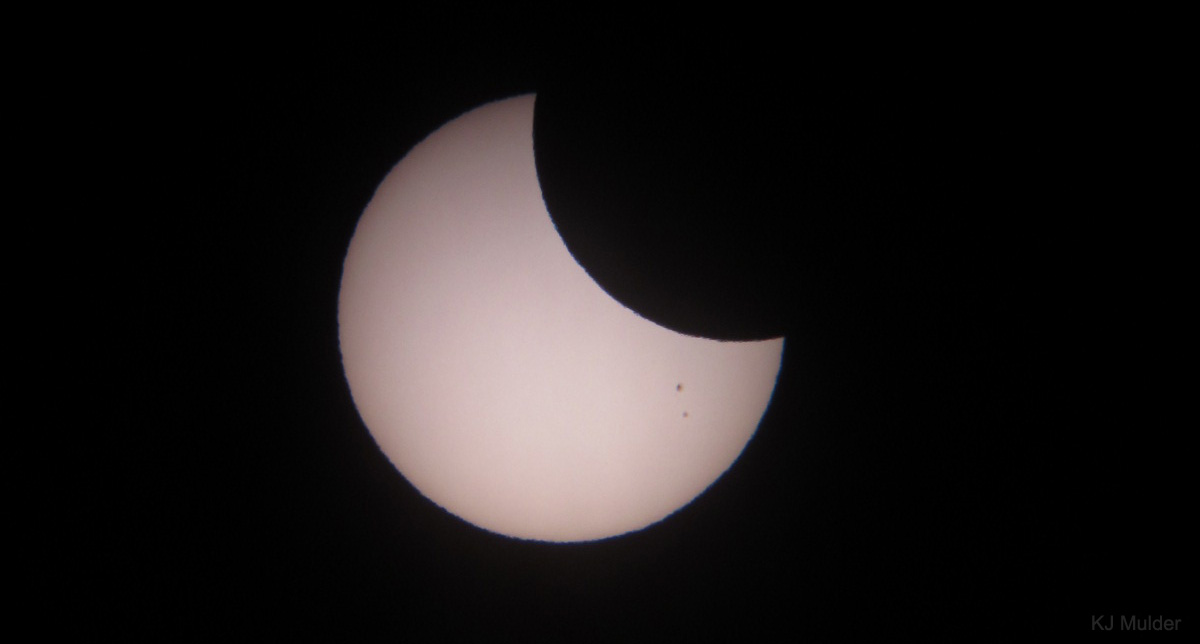
Boosted Reading
Track down a lot of information from the Eclipse Chasers, grab resources for eclipse photography on Mr. Eclipse.com, and on NASA'southward Eclipse Website, find calendars, maps and information virtually past and future solar and lunar eclipses.
Bibliography
- NASA Total and Annual Solar Eclipse Paths: 2021-2040
- Sean M. Carroll, Enrico Fermi Institute, lecture notes on full general relativity
- Stanford Solar Center, Observing the Sun for yourself
Editor's Annotation: If yous snap an amazing solar eclipse photo and would like to share it with Space.com'southward readers, send your photo(due south), comments, and your name and location to spacephotos@space.com.
Follow us on Twitter@Spacedotcomand on Facebook .
Bring together our Space Forums to keep talking space on the latest missions, night sky and more! And if you have a news tip, correction or annotate, allow us know at: customs@infinite.com.
Source: https://www.space.com/15584-solar-eclipses.html
0 Response to "We Can See Total Solar Eclipses Because of Which of the Following?"
Post a Comment